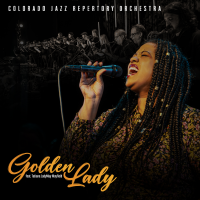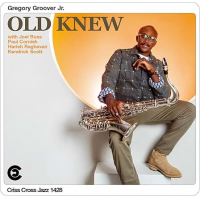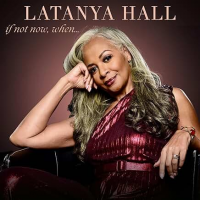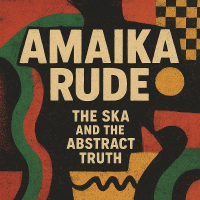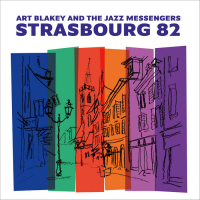Home » Jazz Articles » Album Review » Jimmy Smith: Dot Com Blues
Jimmy Smith: Dot Com Blues
Smith established the classic Hammond B-3 jazz sound and remained the organ's definitive jazz stylist for decades thereafter. He enlisted first with Blue Note for whom he unleashed a string of classic party 'til dawn, smoky jazz throwdowns simmering with blues, gospel, soul, and funk. These classics include 1958's The Sermon, with its stunning side-long title track, in the company of Lee Morgan, Art Blakey, Kenny Burrell, Lou Donaldson and other masters of the blue groove; and Midnight Special and Back At The Chicken Shack, with an ensemble smaller in size but not in effect (a quartet with Burrell, drummer Donald Bailey, and Stanley Turrentine), both recorded on the same torrid August day in 1960.
Smith joined Verve Records in the mid-'60s and recorded for the label up until 1973, releasing several albums orchestrated by Oliver Nelson and scoring with Who's Afraid of Virginia Woolf? and other theme-oriented productions. He later briefly rejoined Blue Note and recorded for Milestone and several other labels before landing back at Verve in 1995 with the heat-seeking Damn!, cut with and across generations of sizzling jazzmen including Bernard "Pretty" Purdie, Nicholas Payton, Roy Hargrove, and Christian McBride.
Ron Goldstein, President of the Verve Music Group, tried to figure out how to handle Smith's debut for the label's Blue Thumb imprint and first new recording in over five years: "I figured the best way to swing the spotlight back around to Jimmy was to have him cut something outside of the jazz marketplace. Why not the blues?"
Coinciding with the past year's painful Nasdaq market plunge, dot com blues is like one of those old soul/R&B reviews where the same crack band backed up about a dozen different groups, all of whom performed "Greatest Hits" segments with machine-gun precision. Smith's quartet with guitarist Russell Malone, bassist Reggie McBride and drummer Harvey Mason serve as the core band. Consistent with this approach, dot com blues features several vocalists and the assistance of Dr. John as composer, pianist, and lead vocalist on numerous tracks.
Smith features three guitarist/vocalists in straight-up blues, including "Strut," a simple Texas shuffle from Taj Mahal, and "Over & Over" from Keb' Mo.' But wizened B. B. King steals the guitar jamboree with his own composition, the timeless "Three O'Clock Blues," where his sweetly stinging guitar and defiant vocal practically roar, "You can call me MISTER King!"
Etta James swings sassy with her vocal on Willie Dixon's classic "I Just Want To Make Love To You," with its lyrics reworked to fit a woman's perspective. Dr. John sings and plays piano on the opening track, his original "Only In It For The Money." In this rollicking blast of New Orleans, John's piano counterpunches Smith's organ smears like a body puncher pounding the heavy bag. First solo, first track, Smith sets the standard this is gonna be one groovy blue and lowdown set.
Throughout, Smith seems content contributing to the mood instead of seeking the spotlight. The rest of his band also comes through. Guitarist Malone steps in style out on this leisurely, seven-minute-plus workout of the classic blues "C. C. Rider," not only as a soloist but also in his funky blue comping behind Smith's solo. Malone also rocks the fizzing, sloe gin blues of a title track and seems to deepen the flame of Smith's playing there too. Mason's snare lags just "behind the 4" in this remake of Smith's "Eight Counts For Rita," creating a New Orleans "second line" feel that seems to solidify Smith's influence on Medeski Martin & Wood.
Perhaps because of the more compact structure of "Rita," compared to the more lengthy tunes, Smith's playing seems most focused here. He also brightens with brilliant swaths this remake of "Mood Indigo" (Ellington), genteel and elegant in the face of the funky honky-tonk feel in the rest of this set.
Jimmy Smith's dot com blues sounds and feels like a newly discovered Booker T. & The MGs set or like a legendary 1960s soul/R&B revue. It may not be all Jazz all the time, but it plays comfortably and well.
Track Listing
Only in It for the Money; 8 Counts for Rita; Strut; C.C. Rider; I Just Wanna Make Love to You; Mood Indigo; Over and Over; Three O'Clock Blues; Dot Com Blues; Mr. Johnson; Tuition Blues; Since I Met You Baby.
Personnel
Jimmy Smith
organ, Hammond B3B.B. King
guitar, electricEtta James
vocalsGeorge Bohannon
tromboneLeslie Drayton
trumpetDarrell Leonard
trumpetHerman Riley
saxophoneJoe Sublett
saxophoneJohn Porter
guitarOscar Brashear
trumpetMaurice Spears
tromboneLenny Castro
percussionHarvey Mason
drumsReggie McBride
bassPhil Upchurch
guitarRussell Malone
guitarKeb' Mo'
guitarTaj Mahal
guitar and vocalsJon Cleary
guitar and vocalsDr. John
pianoAdditional Instrumentation
Chris Stainton - piano (tracks: 8); Sir Harry Bowens - vocals (tracks: 5, 7); Sweet Pea Atkinson - vocals (tracks: 5, 7); Neil Hubbard - guitar (tracks: 8); Pino Palladino - bass guitar (tracks: 8); John Clayton - double bass (tracks: 6); Andy Newmark - drums (tracks: 8).
Album information
Title: Dot Com Blues | Year Released: 2000 | Record Label: Verve Music Group
Tags
PREVIOUS / NEXT
Support All About Jazz
 All About Jazz has been a pillar of jazz since 1995, championing it as an art form and, more importantly, supporting the musicians who make it. Our enduring commitment has made "AAJ" one of the most culturally important websites of its kind, read by hundreds of thousands of fans, musicians and industry figures every month.
All About Jazz has been a pillar of jazz since 1995, championing it as an art form and, more importantly, supporting the musicians who make it. Our enduring commitment has made "AAJ" one of the most culturally important websites of its kind, read by hundreds of thousands of fans, musicians and industry figures every month.























